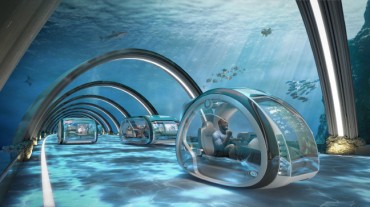
Researchers in South Korea are exploring a promising approach to make carbon capture and utilization (CCU) technology more environmentally friendly. (Image courtesy of Pixabay)
JEJU, Apr. 29 (Korea Bizwire) – Researchers in South Korea are exploring a promising approach to make carbon capture and utilization (CCU) technology more environmentally friendly by powering the energy-intensive process with electricity instead of fossil fuels.
At a symposium held on April 25 at the Jeju International Convention Center by the Korean Institute of Chemical Engineers, experts agreed that “electrifying” CCU could significantly increase its efficiency while expanding the technology’s boundaries into the energy sector.
While CCU was developed to reduce carbon emissions, the production process itself relies on fossil fuels. Utilizing renewable electricity could bring CCU closer to being a zero-carbon solution, the researchers explained.
“Chemical processes inherently require a lot of energy, which traditionally came from fossil fuels,” said Hwang Dong-Won, head of the chemical process research division at the Korea Research Institute of Chemical Technology (KRICT). “Now, we need to leverage clean energy sources, which is where electrification comes in.”
Beyond simply replacing fossil fuels, electrification can also improve efficiency by reducing reaction times or increasing the selectivity — the ratio of desired products, according to the researchers.
“Overseas studies suggest electrification could shrink the size of reactors where chemical reactions occur by up to 100 times,” said Park Ji-Hoon, director of KRICT’s CO2 Energy Research Center. “It’s also modular and decentralized, making it easier to implement at different industrial sites with varying CO2 emission profiles.”
However, transitioning CCU to electrification will require developing new catalysts, reactors and processes tailored for the technology — a significant challenge.
The researchers emphasized that electrified CCU should be developed with a long-term vision, gradually increasing the use of renewable energy while leveraging existing CCU technologies.
With the South Korean government recognizing this need, research institutes have jointly proposed a project focused on zero-carbon, electrified CCU as part of a strategic global top-tier research program.
“There’s demand for the technology, and we need to work together,” Hwang said. “With a clear direction towards zero-carbon, developing these technologies now will enable us to be cost-competitive and viable when clean energy becomes more widespread.”
“CCU research has been fragmented so far, with each group working on disparate components, making it difficult for individual efforts to thrive,” Park added. “By pooling our resources, we can demonstrate the diversity and possibilities to industry.”
In fact, the struggling petrochemical sector, facing intense competition from China, is cautiously eyeing CCU as a potential breakthrough.
KRICT recently signed a cooperation agreement with GS Caltex to conduct CCU demonstration research and business projects.
“While other companies are interested, the business model isn’t clear yet, so they’re hesitant to make moves,” Hwang said. “But the industry is increasingly seeing green hydrogen and CCU as the next big opportunities.”
The researchers stressed that for CCU electrification to successfully reach the demonstration stage, it must be considered within an energy policy framework — with demand and supply considered together, similar to hydrogen and biomass.
“Since we’re essentially inputting energy into discarded materials from the chemical industry, we need to philosophically examine how to integrate and transition CCU into the energy and chemicals sectors,” Park said. “Rather than viewing it as a siloed technology area, we need to explore policies that can combine CCU with our overall energy mix.”
Kevin Lee (kevinlee@koreabizwire.com)






